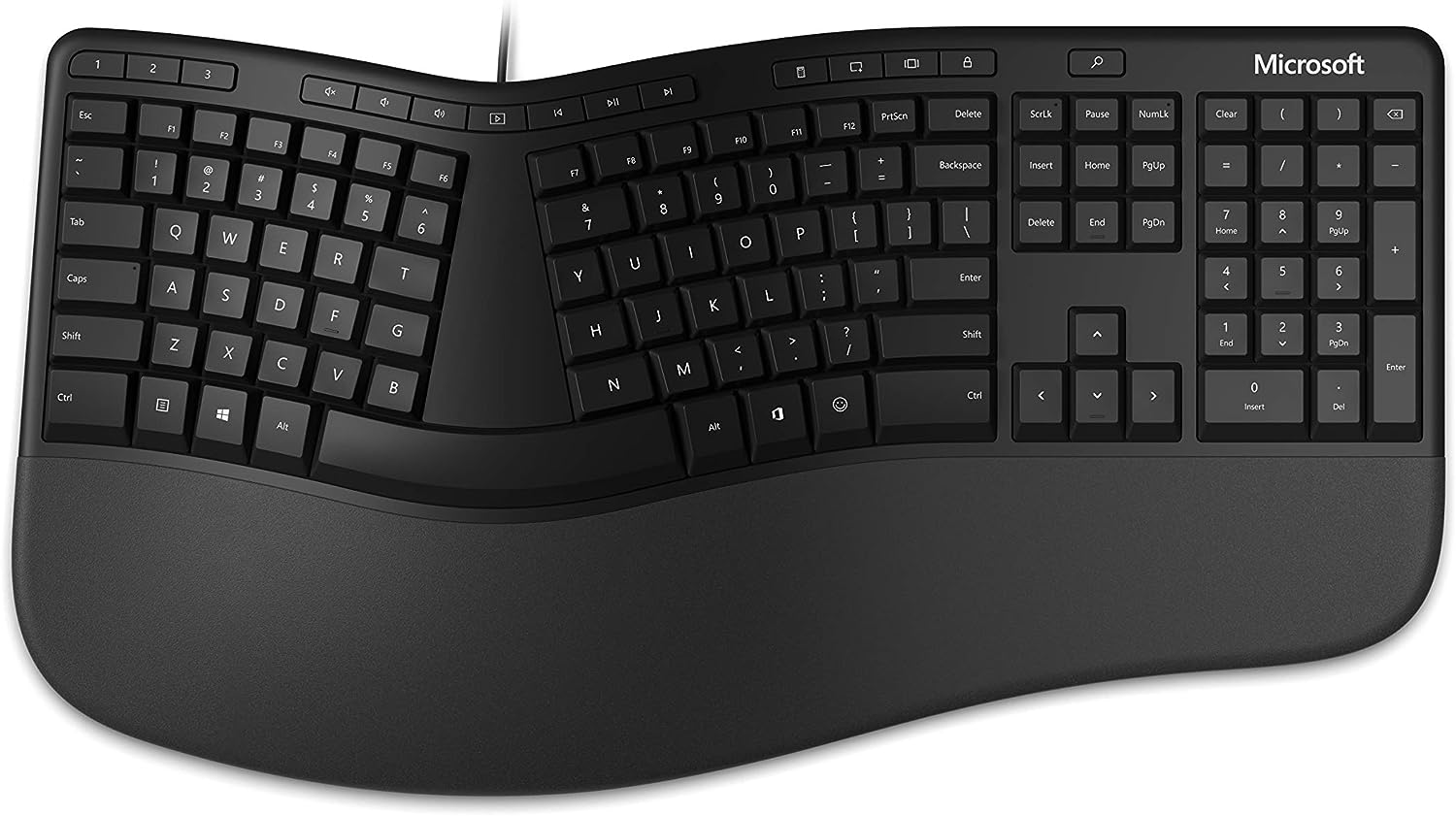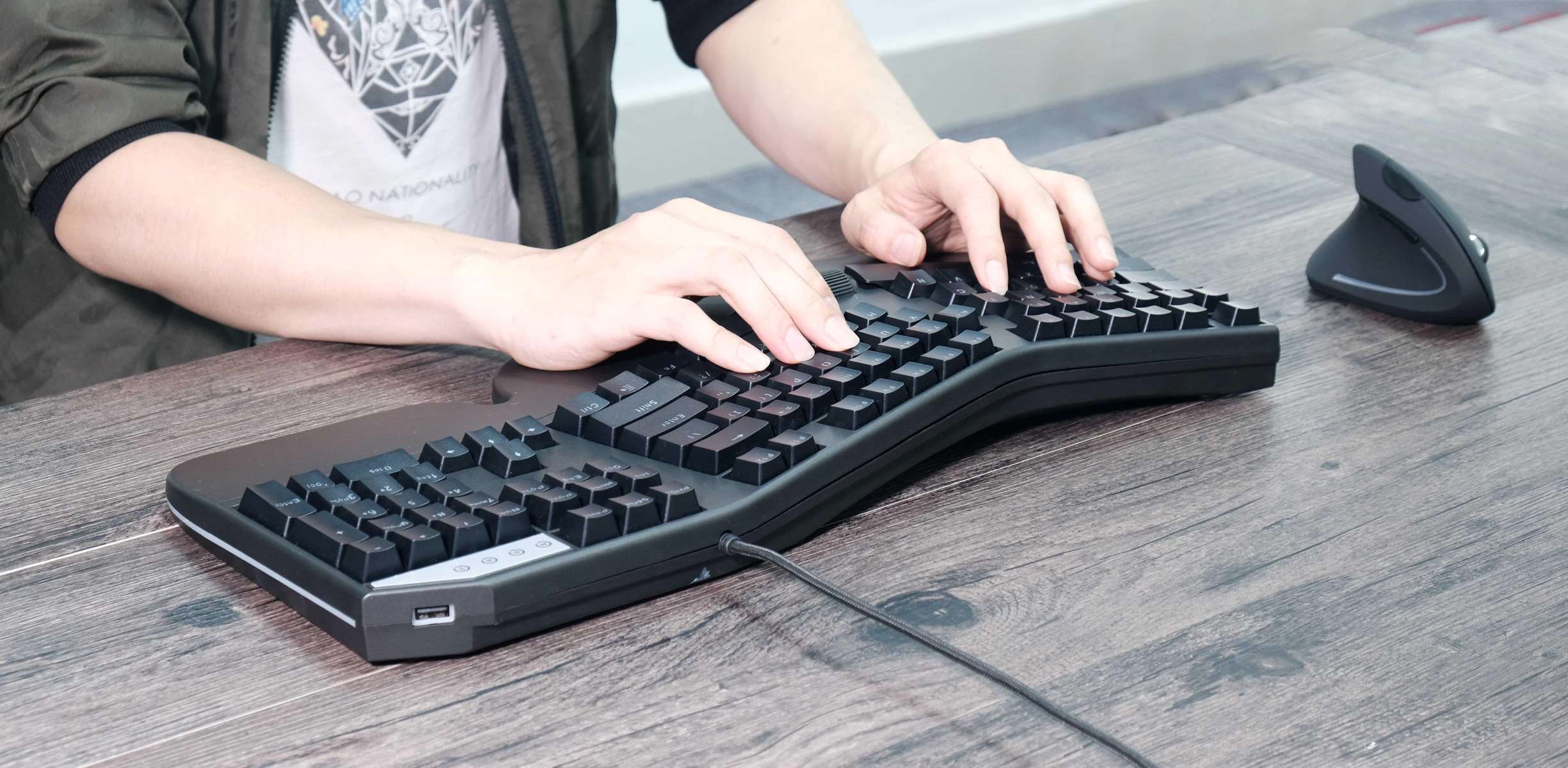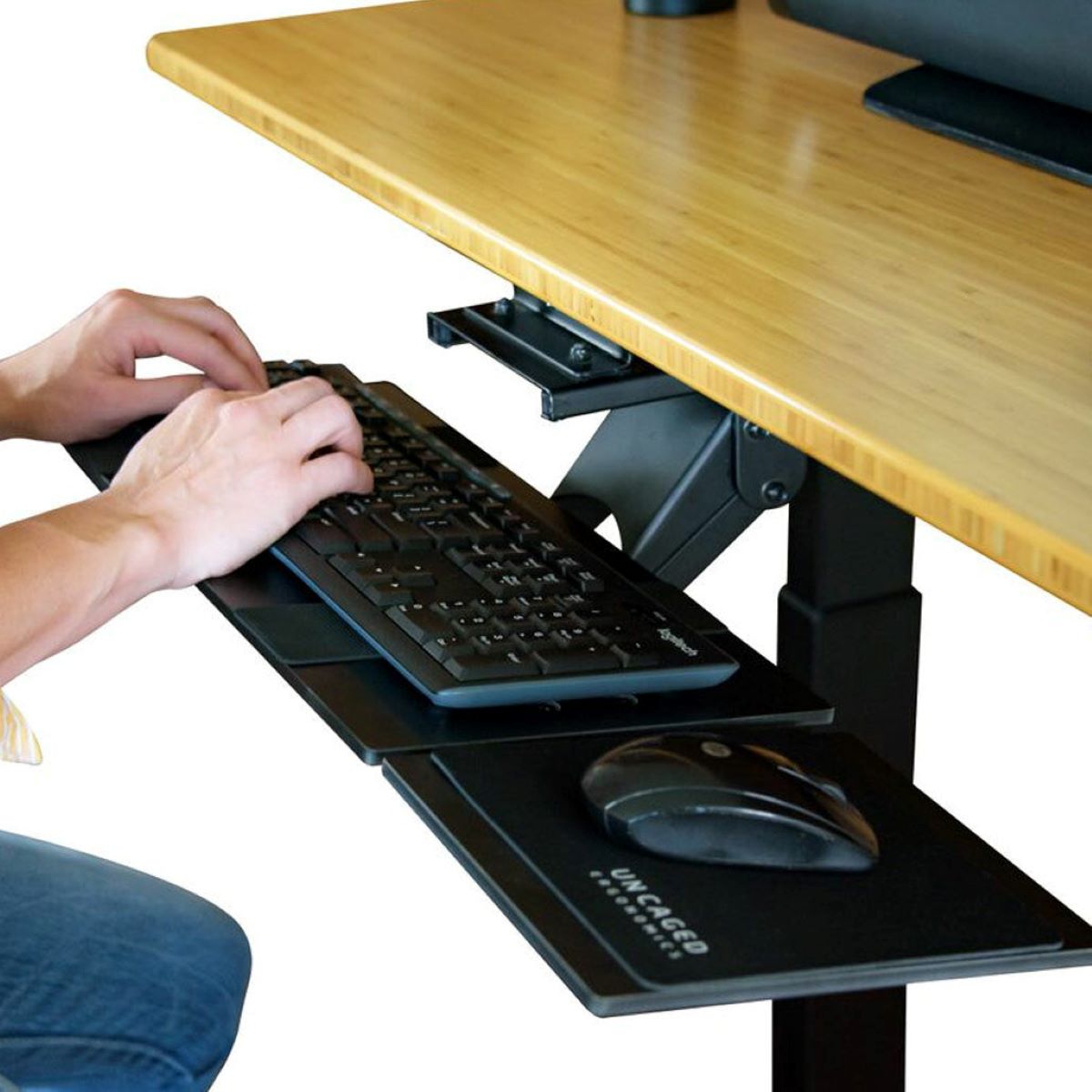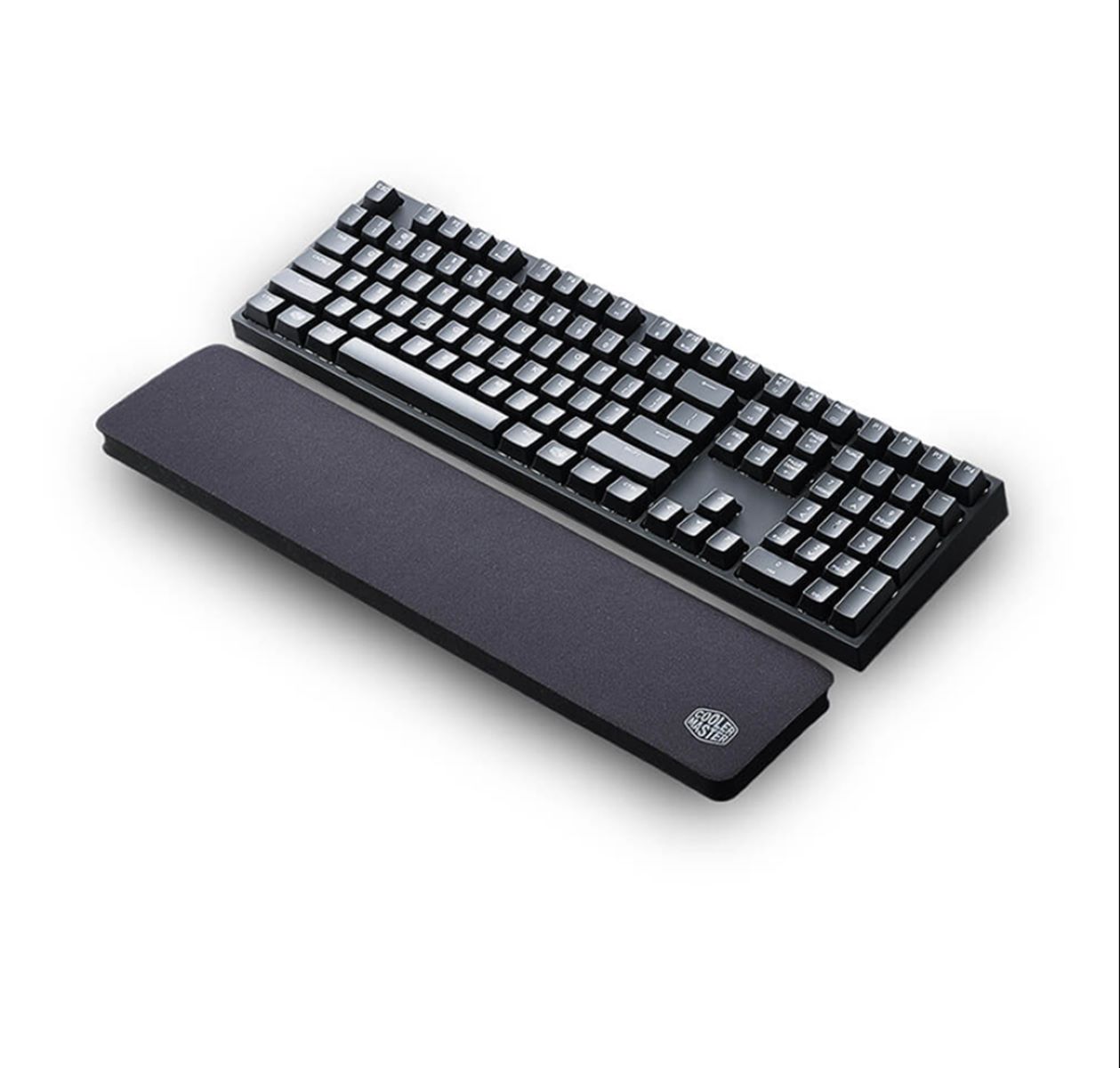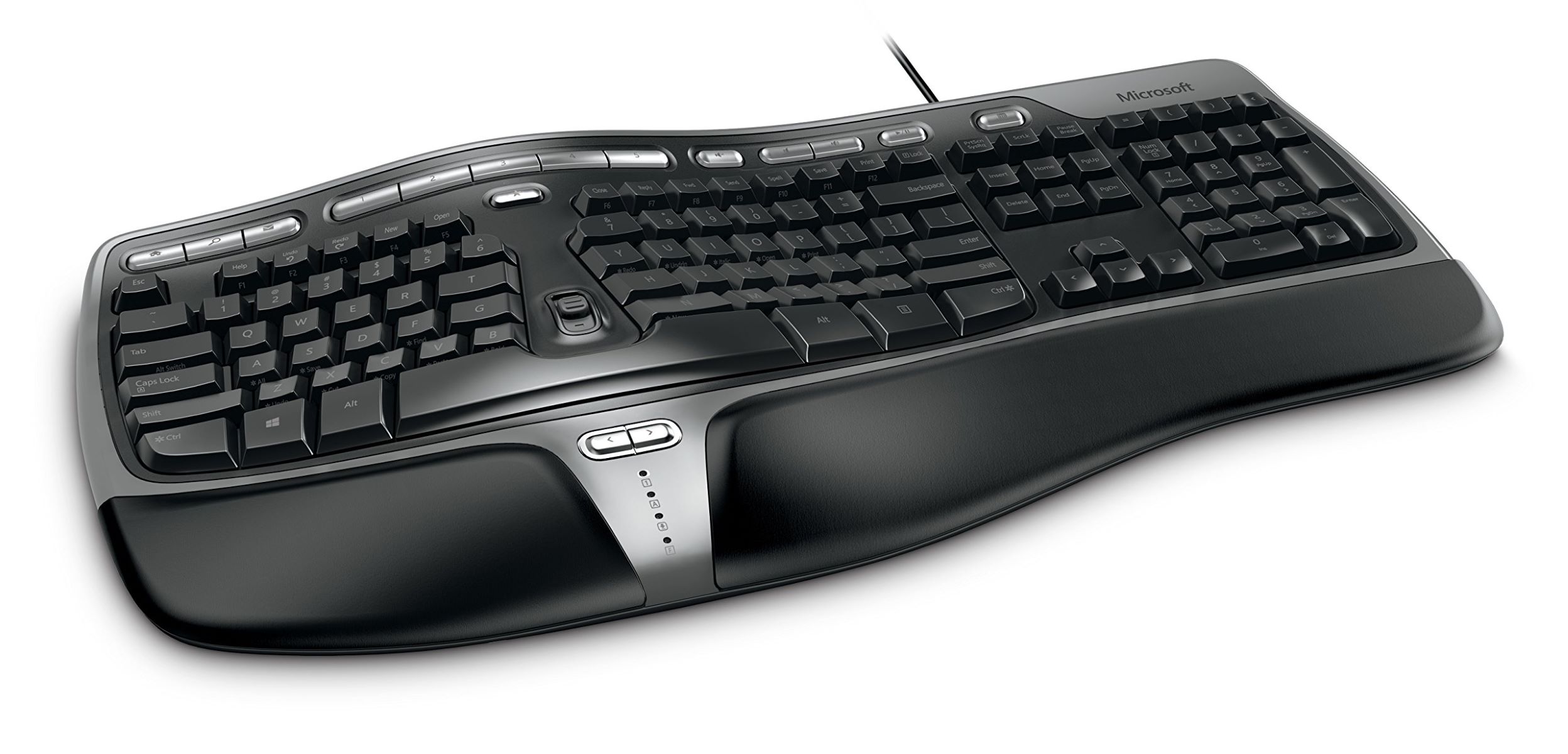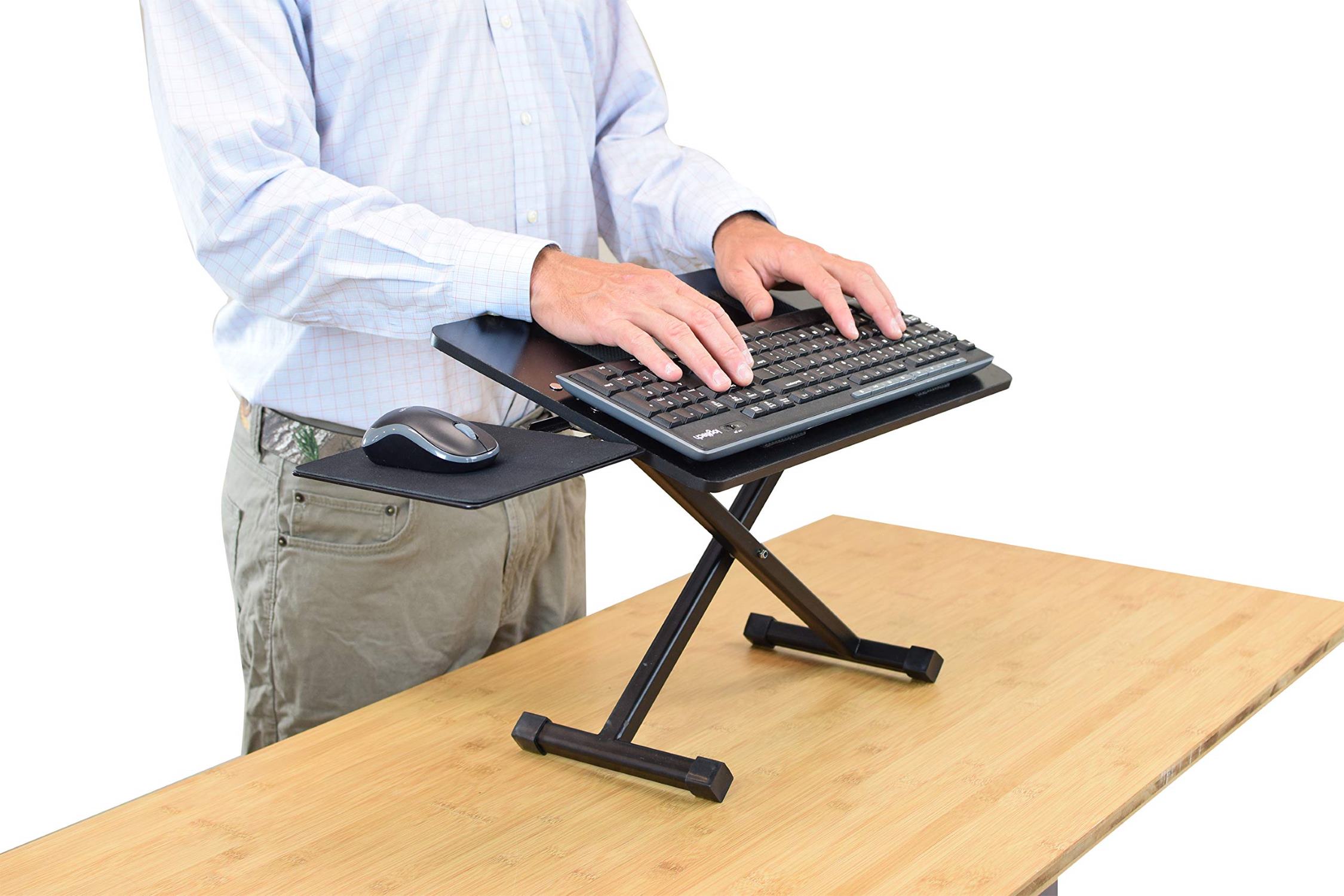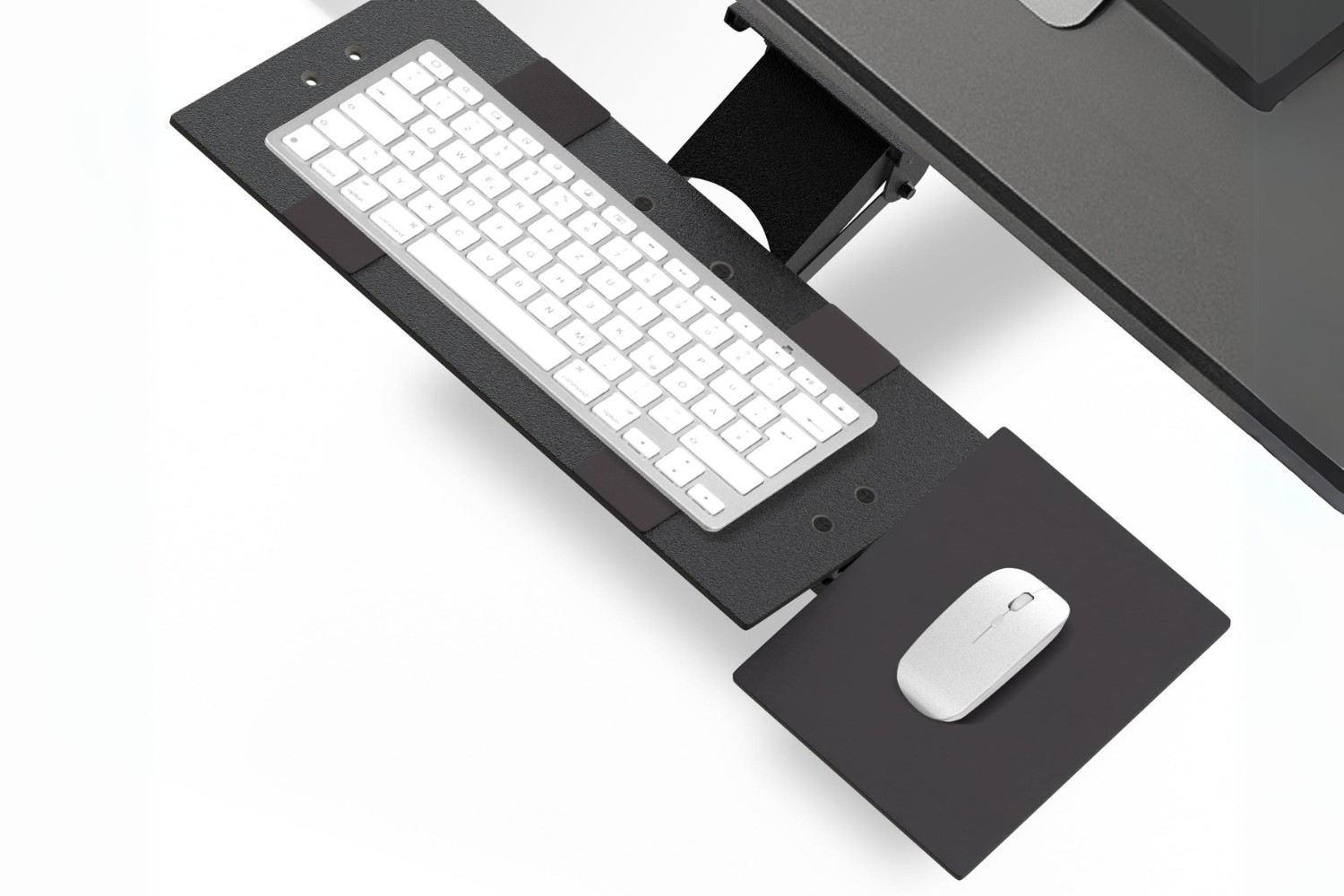Introduction
Welcome to the world of ergonomic keyboards, where comfort, productivity, and health merge into one powerful tool. In this digital age, typing has become an integral part of our lives, whether it’s for work, leisure, or communication. However, extended hours of typing can lead to discomfort, fatigue, and even long-term health issues such as repetitive strain injuries (RSIs).
This is where ergonomic keyboards come in. These specially designed keyboards aim to provide a more comfortable and natural typing experience, reducing the strain on your wrists, hands, and fingers. By promoting proper posture and minimizing repetitive movements, ergonomic keyboards offer a host of benefits that enhance both your productivity and overall well-being.
In this article, we will delve into the world of ergonomic keyboards, exploring what they are, why they are important, and how to choose the right one for you. Whether you are a professional typist or a casual computer user, understanding the benefits and features of ergonomic keyboards will empower you to make an informed decision about investing in this innovative technology.
But first, let’s take a closer look at ergonomics and why it plays a crucial role in creating a healthier and more efficient typing experience.
What is Ergonomics?
Ergonomics is the scientific study of designing and arranging objects, systems, and environments to fit the needs and capabilities of individuals. It focuses on optimizing human well-being and performance by reducing physical and mental strain. When applied to the field of keyboards and typing, ergonomics plays a critical role in the design and development of ergonomic keyboards.
The primary goal of ergonomics is to create a comfortable and efficient working environment that minimizes the risk of injuries and enhances productivity. By understanding the physiological and psychological aspects of human interaction with technology, ergonomics seeks to eliminate unnecessary strain on the body and mind.
When it comes to typing, ergonomics takes into account various factors, such as body posture, hand and wrist positioning, key layout, and typing force. It aims to reduce muscle tension, prevent repetitive strain injuries, and promote a natural alignment of the body while typing.
Ergonomics is not limited to keyboards alone; it extends to other aspects of computer use, including monitors, chairs, desks, and input devices. However, for the purpose of this article, we will solely focus on ergonomic keyboards and their impact on typing comfort and health.
Now that we have a basic understanding of ergonomics, let’s explore what exactly an ergonomic keyboard is and how it differs from a traditional keyboard.
What is an Ergonomic Keyboard?
An ergonomic keyboard is a specially designed keyboard that aims to optimize the comfort and efficiency of typing while reducing the risk of musculoskeletal disorders and repetitive strain injuries (RSIs). Unlike traditional keyboards, ergonomic keyboards are engineered to promote a more natural hand and wrist position, aligning with the body’s biomechanics.
One of the key features of an ergonomic keyboard is its split design, which allows for a more natural hand placement. Traditional keyboards typically have keys arranged in a flat layout, forcing the wrists to bend inward, leading to strain and discomfort over time. In contrast, ergonomic keyboards are divided into two or more sections, creating a gentle curve that mimics the natural resting position of the hands and wrists.
In addition to the split design, ergonomic keyboards often incorporate other features to enhance user comfort. These may include a built-in wrist rest to support the wrists and reduce pressure on the carpal tunnel, adjustable tenting to allow for customized angles that suit individual preferences, and a contoured shape that follows the natural curvature of the hands. Some ergonomic keyboards may also have specially designed keys with reduced travel distance, requiring less force to press, minimizing finger fatigue.
It is important to note that not all ergonomic keyboards are created equal, and the term “ergonomic” can be subjective. What works for one person may not work for another, as everyone has unique hand size, typing style, and comfort preferences. Therefore, it is crucial to choose an ergonomic keyboard that suits your individual needs and provides the necessary support to alleviate any existing discomfort or future risk of injuries.
Now that we have a clearer understanding of what an ergonomic keyboard is, let’s explore the benefits that these keyboards offer and how they can improve your typing experience.
Benefits of Using an Ergonomic Keyboard
Using an ergonomic keyboard provides a multitude of benefits that go beyond just comfort. Here are some key advantages of using an ergonomic keyboard:
- Improved Comfort: The ergonomic design of these keyboards promotes a more natural hand and wrist position, reducing strain and discomfort, even during extended typing sessions. The split layout and adjustable features allow users to find a position that suits their individual needs and preferences.
- Reduced Risk of Injuries: Ergonomic keyboards are specifically designed to minimize the risk of musculoskeletal disorders, such as carpal tunnel syndrome and tendonitis. By promoting proper hand and wrist alignment, these keyboards help prevent repetitive strain injuries (RSIs) associated with prolonged typing on traditional keyboards.
- Enhanced Productivity: With reduced discomfort and fatigue, users can type for longer periods without experiencing the same level of mental and physical strain. This increased comfort often translates into improved focus, accuracy, and typing speed, ultimately boosting productivity.
- Customized Support: Many ergonomic keyboards offer adjustable features, such as tenting, wrist rests, and palm supports, allowing users to customize their typing experience to their unique needs. This personalized support ensures optimal comfort and reduces the risk of strain or injuries caused by an ill-fitting keyboard.
- Prevention of Eye Strain: Some ergonomic keyboards are equipped with built-in palm rests that elevate the wrists, which can help position the hands and fingers in a way that reduces strain on the neck and eyes. This can be particularly beneficial for individuals who spend long hours typing and staring at a computer screen.
- Long-Term Health Benefits: By using an ergonomic keyboard, you are investing in your long-term health. By reducing strain and discomfort, these keyboards can help prevent chronic pain and repetitive strain injuries, allowing you to maintain good hand and wrist health over time.
Now that we understand the benefits of using an ergonomic keyboard, let’s explore the different types of ergonomic keyboards available in the market and their unique features.
Different Types of Ergonomic Keyboards
Ergonomic keyboards come in various designs, each catering to different ergonomic needs and preferences. Here are some of the most common types of ergonomic keyboards:
- Split Keyboards: Split keyboards are designed with a gap in the middle, allowing users to position their hands at a more natural angle. The split design can be adjusted to fit the user’s shoulder width and reduce strain on the wrists, making it a popular choice for those who suffer from wrist or shoulder discomfort.
- Angled Keyboards: Angled keyboards have a curved or tented shape, which raises the middle part of the keyboard. This design helps align the hands and wrists with the forearm’s natural position, reducing pronation and minimizing strain on the wrists and shoulders.
- Contoured Keyboards: Contoured keyboards have a sculpted shape that fits the natural curvature of the hands. The keys are arranged in concave wells to reduce stretching and unnecessary movements. This type of keyboard provides a comfortable and ergonomic typing experience for users.
- Compact Keyboards: Compact ergonomic keyboards are smaller in size and have a more condensed layout compared to traditional keyboards. They eliminate the number pad, allowing users to type with their hands closer together, reducing strain on the shoulders and improving reachability.
- Vertical Keyboards: Vertical keyboards are designed to place the hands and wrists in a handshake position, with the keys arranged in a vertical column. This design minimizes pronation and ulnar deviation, reducing strain on the wrists and forearm muscles.
- Adjustable Keyboards: Adjustable ergonomic keyboards offer customizable features such as split capability, tilt, and tenting angles, wrist rests, and key remapping. These keyboards allow users to modify the layout and position based on their individual needs and preferences.
When choosing an ergonomic keyboard, it’s important to consider factors such as your hand size, typing style, and any specific discomfort or injuries you may have. By selecting the right type of ergonomic keyboard that suits your needs, you can further enhance your typing comfort and reduce the risk of strain or injuries.
Now that we have explored the different types of ergonomic keyboards available, let’s discuss the important features to look for when choosing an ergonomic keyboard.
Features to Look for in an Ergonomic Keyboard
When searching for the perfect ergonomic keyboard, there are several important features to consider. These features can greatly impact your comfort, productivity, and overall typing experience. Here are some key features to look for:
- Split and Adjustable Design: A split keyboard design allows users to position the two halves to match their shoulder width, ensuring a more natural arm and wrist alignment. Additionally, look for keyboards with adjustable angles or tenting options to find the most comfortable typing position for your wrists.
- Ergonomic Key Layout: The arrangement of keys on an ergonomic keyboard should be designed with ergonomics in mind. Look for keyboards with a concave key shape, which provides a more comfortable and natural typing experience. Additionally, consider keyboards with larger keys and proper spacing to minimize accidental keystrokes.
- Palm and Wrist Support: Ergonomic keyboards often feature built-in wrist rests or palm supports. These help to alleviate pressure on the wrists and promote proper hand positioning. Look for wrist rests that are adequately cushioned and designed to reduce strain on the carpal tunnel.
- Hotkeys and Programmability: Some ergonomic keyboards come with customizable hotkeys or programmable keys that allow you to assign shortcuts or macros for frequently used functions. This can significantly boost your productivity and reduce the need for repetitive typing.
- Adjustable Key Force: Consider keyboards with adjustable key force or mechanisms that require less force to press the keys. This feature reduces finger fatigue and minimizes the risk of developing hand and finger-related strain injuries.
- Wireless Connectivity: Wireless ergonomic keyboards provide increased flexibility and freedom of movement. They eliminate clutter on your desk and allow you to position the keyboard at a comfortable distance without being restricted by cables.
- Compatibility: Ensure that the ergonomic keyboard you choose is compatible with your computer’s operating system, whether it’s Windows, macOS, or Linux. Additionally, consider compatibility with different devices such as tablets and smartphones if you plan to use the keyboard with multiple devices.
Remember, the perfect ergonomic keyboard will vary depending on individual needs and preferences. Take the time to research and try out different options to find the one that suits you best. This investment in a high-quality ergonomic keyboard will greatly contribute to your long-term comfort, productivity, and overall well-being.
Now that we have covered the key features to look for in an ergonomic keyboard, let’s move on to the process of choosing the right ergonomic keyboard for you.
How to Choose the Right Ergonomic Keyboard for You
Choosing the right ergonomic keyboard is crucial to ensure optimal comfort and support for your typing needs. Here are some steps to guide you in selecting the perfect ergonomic keyboard:
- Assess Your Needs: Consider your specific requirements, such as any existing discomfort or injuries, hand size, typing style, and the amount of time you spend typing. This self-assessment will help you prioritize the features that are most important to you.
- Do Your Research: Look for ergonomic keyboards that meet your identified needs and preferences. Read reviews, compare different brands and models, and consider the reputation and credibility of the manufacturers. Pay attention to any negative feedback or common usability issues that might impact your decision.
- Test Before Buying: If possible, try out different keyboards before making a purchase. Visit a local electronics store or try borrowing from a friend or colleague who already uses an ergonomic keyboard. This hands-on experience will give you a better feel for the different types and designs available.
- Consider Adjustability: Opt for keyboards with adjustable features such as split design, tenting angles, and wrist rest positioning. This flexibility allows you to customize the keyboard to your specific comfort requirements.
- Check for Warranty and Return Policy: Ensure that the keyboard comes with a warranty period and a reasonable return policy. This will give you peace of mind in case you encounter any issues with the product or find that it doesn’t suit your needs after trying it out.
- Budget Considerations: Set a budget range for your ergonomic keyboard purchase. While it’s important to invest in a high-quality keyboard, you don’t necessarily need to break the bank. Look for keyboards that offer a good balance between price and features that meet your requirements.
- Consult with Ergonomic Experts: If you have specific concerns or require professional guidance, consider consulting with ergonomic experts or occupational therapists. They can provide personalized recommendations based on your unique needs and offer valuable insights to help you make an informed decision.
By following these steps and considering your own needs and preferences, you can select an ergonomic keyboard that will provide the comfort and support necessary for a more enjoyable and healthy typing experience.
Now that you have a better understanding of how to choose the right ergonomic keyboard, let’s move on to some essential tips for using an ergonomic keyboard correctly to maximize its benefits.
Tips for Using an Ergonomic Keyboard Correctly
Using an ergonomic keyboard correctly is essential to fully experience its benefits and prevent any potential strain or discomfort. Here are some valuable tips to help you make the most of using your ergonomic keyboard:
- Position the Keyboard Properly: Place the keyboard directly in front of you, centered with your body. Ensure that your arms and wrists are in a relaxed, neutral position while typing, with your elbows at a 90-degree angle.
- Find the Right Height: Adjust the height of your chair or desk so that your forearms are parallel to the floor and in line with the keyboard. This alignment helps maintain a natural posture and reduces strain on the wrists and shoulders.
- Use Proper Hand Positioning: Rest your palms lightly on the wrist rest, if available, without applying excessive pressure. Keep your fingers curved and positioned over the home row keys (ASDF for the left hand and JKL; for the right hand).
- Take Regular Breaks: Even with an ergonomic keyboard, it is important to take regular breaks to stretch your fingers, hands, and wrists. Stand up, move around, and perform hand and wrist exercises to prevent stiffness and promote circulation.
- Adjust Keyboard Settings: Modify keyboard settings, such as key sensitivity or repeat delay, to suit your typing style and preferences. This customization can further enhance your comfort and typing efficiency.
- Practice Good Posture: Maintain good overall posture while typing, keeping your back straight and shoulders relaxed. Avoid slouching or hunching over the keyboard, as this can put strain on your neck, back, and shoulders.
- Listen to Your Body: Pay attention to any discomfort or pain while typing and make necessary adjustments. If you feel any persistent pain or discomfort, it is important to seek medical advice to address any underlying issues.
- Keep Your Workspace Ergonomically Friendly: Consider the ergonomics of your entire workspace. Ensure that your chair, desk, and monitor are also set up in an ergonomic manner to maintain proper alignment and reduce strain on your body.
By implementing these tips and maintaining proper ergonomics while using your keyboard, you can minimize the risk of strain and injuries, and create a more comfortable and productive typing environment.
Now that we have covered tips for using an ergonomic keyboard correctly, let’s address some common misconceptions about these keyboards to provide a clear understanding.
Common Misconceptions about Ergonomic Keyboards
Ergonomic keyboards have gained popularity in recent years, but there are still some misconceptions surrounding their use and effectiveness. Let’s address and clarify some common misconceptions about ergonomic keyboards:
- Ergonomic Keyboards are Uncomfortable: Some people assume that ergonomic keyboards are uncomfortable or difficult to use due to their unique design. However, ergonomic keyboards are specifically engineered to provide a more natural and comfortable typing experience by promoting proper hand and wrist alignment.
- Ergonomic Keyboards are Only for People with Injuries: While ergonomic keyboards are beneficial for individuals with existing injuries or conditions like carpal tunnel syndrome, they are designed to prevent injuries and promote overall comfort for anyone who spends significant time typing. Using an ergonomic keyboard can be proactive in maintaining good hand and wrist health.
- Ergonomic Keyboards are Expensive: While some ergonomic keyboards may have a higher price tag compared to standard keyboards, there are a wide range of options available to fit different budgets. Investing in a quality ergonomic keyboard can save you from potential health issues and discomfort in the long run, making it a worthwhile investment.
- Ergonomic Keyboards Guarantee Instant Relief: While ergonomic keyboards can greatly improve comfort, they may not immediately alleviate pre-existing discomfort. It may take some time for your muscles and joints to adjust to the new keyboard design. Consistent use and proper ergonomics in conjunction with the keyboard are key to experiencing long-term relief.
- Any Keyboard Labeled as “Ergonomic” is Effective: Not all keyboards labeled as “ergonomic” are created equal. It is important to do thorough research, read reviews, and select a reputable brand that has a proven track record in designing and manufacturing high-quality ergonomic keyboards. Look for keyboards that have adjustable features and positive user feedback.
- Ergonomic Keyboards Solve All Posture-Related Issues: While ergonomic keyboards are designed to improve typing posture, it is important to remember that maintaining good overall posture and considering ergonomics for other parts of your workstation, such as a supportive chair and proper monitor placement, are equally important. A holistic approach to ergonomics is necessary for optimal comfort and health.
Understanding these misconceptions helps clear up any confusion and sets realistic expectations for using an ergonomic keyboard. When chosen and used correctly, ergonomic keyboards offer significant benefits in terms of comfort, typing performance, and overall well-being.
Now that we have addressed these misconceptions, let’s wrap up with a brief summary of the information discussed in this article.
Conclusion
Ergonomic keyboards have revolutionized the way we type, providing comfort, support, and improved health benefits. Understanding the principles of ergonomics and the benefits of using an ergonomic keyboard can help you make an informed decision as you search for the right keyboard for your needs.
We learned that ergonomic keyboards are designed to align with the natural posture of our hands and wrists, reducing strain and the risk of repetitive strain injuries (RSIs). By incorporating features such as split design, adjustable angles, wrist rests, and ergonomic key layouts, these keyboards promote a more comfortable and efficient typing experience.
We explored the different types of ergonomic keyboards available, from split keyboards to contoured designs, each catering to unique ergonomic needs and preferences. We also discussed important features to look for, such as adjustability, ergonomic key layouts, and palm and wrist support.
Moreover, we provided tips on how to use an ergonomic keyboard correctly, emphasizing the significance of proper positioning, taking regular breaks, and maintaining good overall posture. By following these guidelines, you can maximize the benefits of your ergonomic keyboard and reduce the risk of discomfort or injuries.
In addition, we addressed common misconceptions surrounding ergonomic keyboards, such as the assumption of discomfort, their exclusive use for individuals with injuries, and their high cost. Understanding these misconceptions helps separate fact from fiction and encourages a more accurate appreciation of the benefits of ergonomic keyboards.
Remember, choosing the right ergonomic keyboard ultimately depends on your individual needs, preferences, and budget. By conducting thorough research, testing out different options, and considering factors such as adjustability and compatibility, you can find the ideal ergonomic keyboard that suits your requirements.
In conclusion, investing in an ergonomic keyboard is an investment in your comfort, productivity, and long-term hand and wrist health. By incorporating ergonomic principles into your typing experience, you can enjoy a more comfortable, efficient, and enjoyable time at your keyboard.







